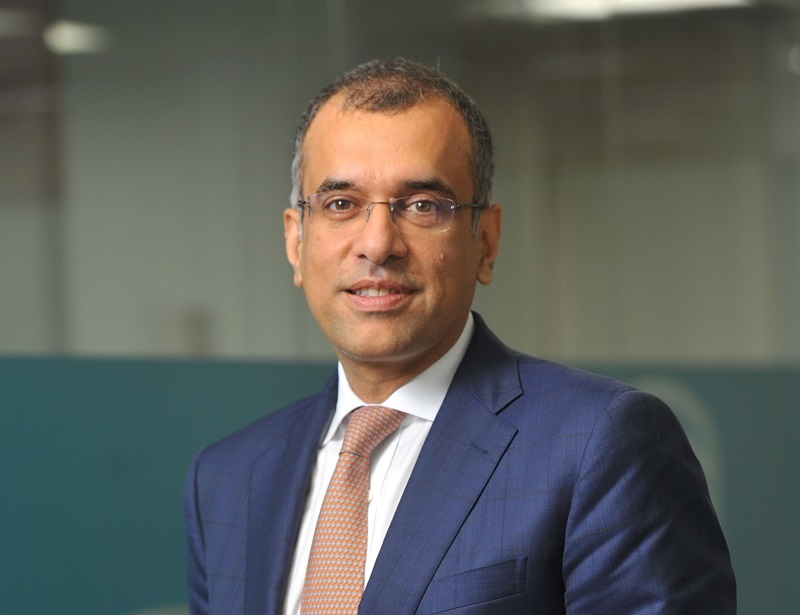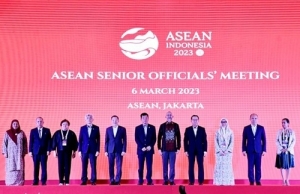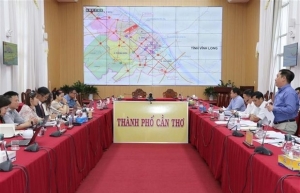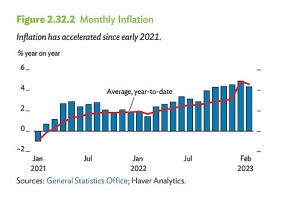Why shape-shifting Asia is good for the world
In its latest forecast, the International Monetary Fund upgraded its estimate for 2023 growth in emerging and developing Asia from 4.9 to 5.3 per cent, which is more than triple the expected pace of US expansion and more than seven times faster than that seen in Europe.
 |
| Surendra Rosha |
Other estimates vary in their figures, but all broadly agree that Asia is where the growth is. This broad-based optimism mostly stems from two long-term trends.
The first is that years of prudent fiscal management since the Asian financial crisis of the late 1990s have enabled most regional economies to emerge from recent events with minimal scarring. The second is that Asia’s intraregional economy is undergoing a historic shift that is making it much less dependent on the health of Western economies than it once was.
Addressing potential weak spots
Part of the drive for better economic management has been to address potential weak spots, including strengthening foreign exchange reserves, controlling inflation, and ensuring that regional economies do not stumble when interest and exchange rates move against them.
Less noticed, but no less important, is the work of organisations like ASEAN and the agreements like the Regional Comprehensive Economic Partnership and the Comprehensive and Progressive Agreement for Trans-Pacific Partnership, which have optimised the area’s long-term growth potential by removing trade barriers and making the region more attractive for investment.
They also have amplified and reinforced a profound structural shift in the regional economy.
For years, much of developing East and Southeast Asia leveraged its low labour costs to tap into export-driven growth, particularly China and the so-called tiger economies.
This set off the fastest and deepest economic transformation in history. GDP per capita in East Asia and the Pacific rose from $3,250 in 1990 to $20,300 in 2021, while foreign direct investment inflows rose from $34 billion to $741 billion.
Hundreds of millions of people were given the opportunity to work their way out of poverty. Within a relatively short span of time, they acquired disposable income and moved into the consumer classes.
The Brookings Institution estimates that the number of consumers in Asia will grow from 560 million in 2000 to 3 billion, or 70 per cent of the region’s population, by 2030, while McKinsey & Co forecasts that Asia will account for over half of global consumption by then.
These new consumers are buying Asian-made goods, as reflected in figures showing that intraregional trade grew by half between 2019 and 2022, according to shipping conglomerate Maersk.
International investors have clearly taken note. Instead of putting money into manufacturing in Asia for export, international investment is increasingly flowing towards made in Asia, for Asia.
There are opportunities here for Western companies. A wide range of industries, including carmakers, machine-tool manufacturers, and luxury retailers, already rely on Asia for the bulk of their new business, and these sectors will continue to flourish for as long as their competitive advantage continues.
Exploiting explosive online growth
The most exciting growth prospects lie in professional service industries, particularly those with well-developed and global digital strategies that are able to take advantage of the explosive growth in Asia’s online community.
The latest UN estimates suggest that Asia’s imports of commercial services increased by 9.2 per cent last year and will grow by another 5 per cent this year. From global middle-class must-haves like education, entertainment, and travel to professional services like accounting, law, and architecture, services will drive the next round of growth.
There are particular opportunities for the financial services industry. Part of this will be managing the wealth of Asia’s new consumers – a Boston Consulting Group report last year estimated that Asia will generate $22 trillion in new wealth between 2020 and 2025.
But this will also involve financing lifestyle improvements and contributing to the growth of Asia and its trading partners by facilitating trade and expanding access to financial products that can fund expansion and manage risk.
The rise of the Asian consumer is inexorably tipping the balance of economic influence eastward. Not only is the region becoming less vulnerable to external economic shocks, it is also close to the point where the world needs Asia's economy to thrive as much Asia needs the global economy.
Asia’s success was founded on supplying the world. The future lies in Asian demand.
 | Vietnam supports ASEAN’s cooperation priorities for 2023: ambassador Ambassador Vu Ho has affirmed Vietnam’s support for and readiness to realise the cooperation priorities for 2023 set by Chair Indonesia and the Association of Southeast Asian Nations (ASEAN). |
 | ADB agrees on loans for important projects in Can Tho The Asian Development Bank (ADB) has agreed on loans for important projects in the Mekong Delta city of Can Tho. |
 | Keeping up with the race on tourism products Pham Hai Quynh, director of the Asian Tourism Institute and chairman of the Vietnam Community Tourism Chapter, explained to VIR’s Thai An why building high-class products is vital for the industry, in addition to loosening visa policies. |
 | ADB sets moderate 2023 growth outlook for Vietnam After a strong performance last year, the Vietnamese economy can expect moderate growth of 6.5 per cent this year, followed by a slight improvement to 6.8 per cent in 2024, according to a recent economic publication from the Asian Development Bank (ADB). |
What the stars mean:
★ Poor ★ ★ Promising ★★★ Good ★★★★ Very good ★★★★★ Exceptional
Related Contents
Latest News
More News
- Takeda supports health resilience amid climate change challenges (December 18, 2025 | 12:39)
- Mondelez Kinh Do - a chapter of purpose-led leadership in Vietnam (December 18, 2025 | 09:44)
- VNPAY services receive the highest-level PCI DSS international security certificates for six consecutive years (December 17, 2025 | 23:47)
- PPL extends its reach into ASEAN (December 17, 2025 | 15:44)
- Over 600 BUV graduates meeting quality benchmarks across triple quality assurance levels (December 17, 2025 | 13:00)
- HEINEKEN Vietnam partners with Ho Chi Minh City Traffic Police on road safety drive (December 17, 2025 | 09:42)
- BUV and China’s CSCSE sign MoU to boost educational cooperation (December 17, 2025 | 08:00)
- PVT Logistics honoured with ‘Fast Enterprise Award’ at APEA 2025 (December 16, 2025 | 18:22)
- Empowering Sustainable Data Centers with Smart Infrastructure Solutions (December 16, 2025 | 13:59)
- Vietjet wins gold ESG transport sustainability award in Taiwan (China) (December 13, 2025 | 22:03)

 Tag:
Tag:






















 Mobile Version
Mobile Version